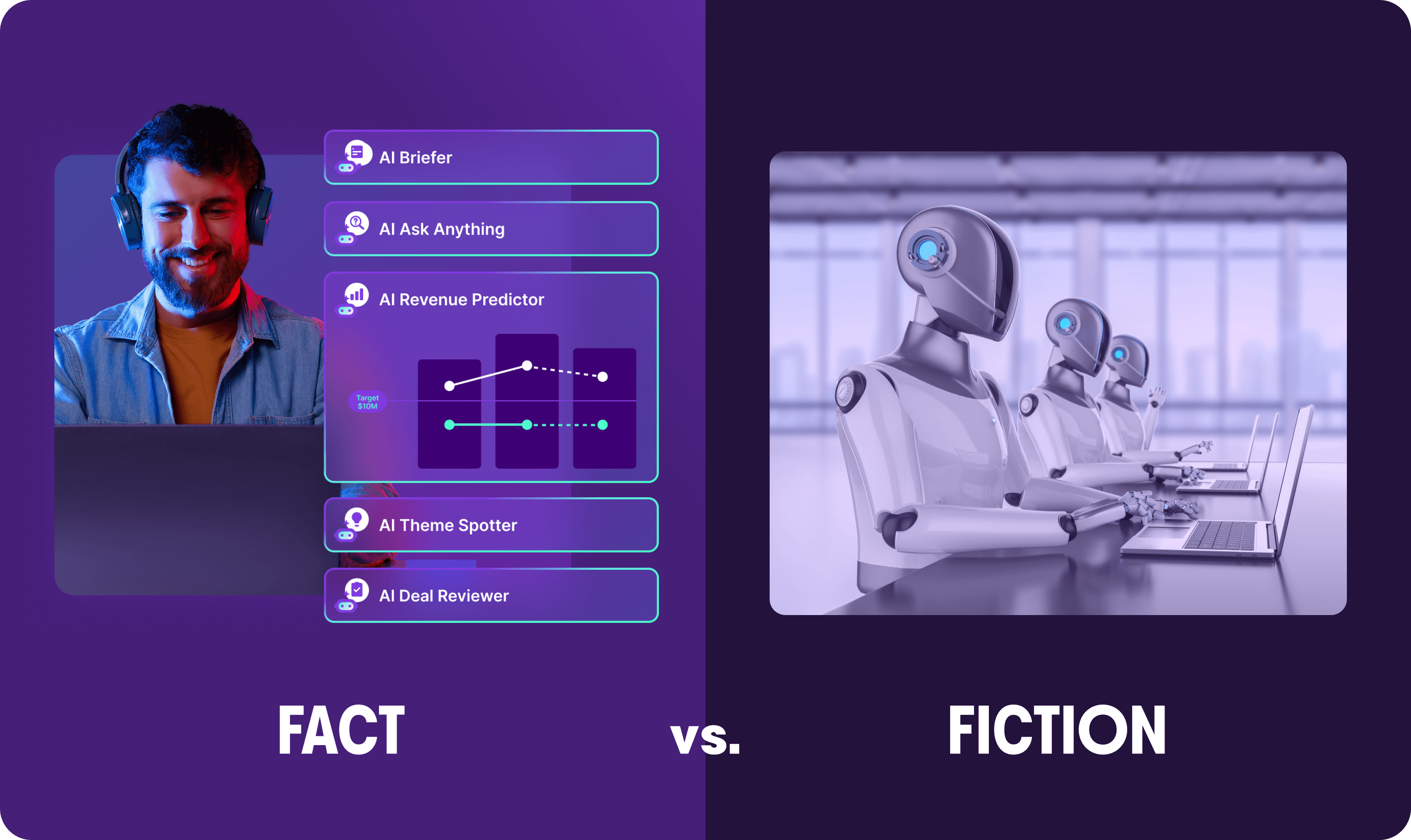Sales engagement
WHAT IS A DISCOVERY CALL IN SALES? (PLUS A SIX-STEP DISCOVERY PROCESS)

Suchibaksmita Sahoo
Sr. Manager, Web Marketing
Published on: May 9, 2019

What is a discovery call in sales?
It’s the most important conversation in the sales process.
Discovery calls set the trajectory of your deal and will determine how you’ll do everything else in the sales process.
If you do it right, you’ll be able to establish an authoritative relationship with your buyer.
If it goes wrong, you’ll be playing catch during all of your conversations, until your prospect eventually ditches you.
Here’s our breakdown of “what is a discovery call?” and the steps you need to take to nail yours.
Ready to get started? Here are the steps for having a great discovery call.
What is a Discovery Call?
A discovery call is the first conversation a salesperson has after a prospect shows initial interest. This call serves as an opportunity to uncover a buyer’s pain points, priorities, and goals and begin building rapport and trust. The goal of this call is to ask a series of questions to determine fit and ultimately continue moving the buyers through the sales process.
Step 1: Plan your discovery call
Discovery calls require work before you even pick up the phone.
Think about it.
You don’t want to be that person on the phone asking things you could’ve found out on the Internet.
Pre-call research provides you with the ammo you need to ask detailed, situational questions that will reveal exactly what’s happening in your prospect’s world.
By knowing what he or she does in their role, what their company and industry does, and where they came from (i.e. what content they engaged with, where they traveled on your website beforehand, etc.) you can easily move into further exploration.
(Psst… we have a checklist of discovery call prep tips in this free, downloadable cheat sheet 👇)
Step 2: Qualify
After you thoroughly follow the steps of our Sales Call Prep Checklist, you’re ready to kick off discovery.
As illustrated in the SPIN method of selling , here’s where you ask situational questions to qualify your buyer. These are questions which ask for background information or facts — but remember, they shouldn’t be questions that you can find the answers to on the Internet. Your goal in this stage is to qualify whether you and your buyer have a mutual fit.
You’ll learn where your prospects stand — from their processes and pain points to competitive plans and results — with questions like:
- What is your [or your team’s] process for X?
- Why do you do X this way?
- Is there a budget in place for X?
- How much time have you spent doing X this way?
- How much budget do you have assigned to X?
- How much of an impact does X have on your business?
TIP: Limit the number of discovery questions you ask here. Too many will make your buyer feel overwhelmed. They also leave less time for the most important ones.
Instead of rapid-firing questions at your prospects right from the start, you should aim to distribute your questions evenly across the sales call .
Average-performing reps treat discovery like a static event, where questions are front-loaded at the beginning of the conversation.
On the other hand, top-performing reps have discovery call questions dispersed throughout the entirety of the call.
Even if you have highly-targeted questions, your goal is to keep your prospect feeling natural and relaxed. Think of yourself as your buyer’s friend that’s there to help them make the best choice possible, rather than an FBI interrogator.
Step 3: Unearth Pain
Based on what your prospect s about his or her business, you can surface areas of opportunity and determine how you can paint a picture of what could be “going better.”
Even if your prospect is unaware that they have a problem, you should still ask questions that surface their key priorities, and questions that highlight common places your solution adds value. These include:
- How satisfied are you with X?
- What’s your biggest challenge as it relates to ___________?
- What will prevent you from achieving your top priorities?
- How many people do you have to bring in to achieve your desired results?
- What happens if you fail to achieve X?
- If a problem surfaces with X, are you able to easily solve it?
TIP: Don’t neglect your webcam during discovery — especially when you’re unearthing pain.
Using your webcam allows you to read your buyer’s reactions in real-time (keep your call software open and active on the screen to notice: did they nod approvingly? scrunch their face?) and respond with the appropriate follow up.
There’s data behind this — Closed deals involve using webcams 41% more often than lost deals :
Because other calls already have a visual backdrop for the conversation (demo calls have a product demo, presentations have a visual slide presentation, etc.), discovery calls are just you and the buyer.
When the buyer sees your face, the call becomes more human. It helps your buyer believe you’re driven by curiosity, rather than checking boxes in a to-do list of questions.
BONUS: If you want to ensure your video calls are extra successful, here’s a 9-point checklist.
Step 4: Intensify Pain
Once you’ve identified your buyer’s issues, figure out how serious they are. And if they’re not serious, make them be.
Implicationquestions reveal just how deep the pain points of your buyers are. They are questions that explore the consequences (or implications) of the problems you’ve surfaced so far.
They also provide the information you need to tailor your message and instill urgency in the buyer.
To make the customer eager for a solution to their problems, ask questions like:
- How much money are you wasting due to X problem?
- How is X impacting the rest of your team?
- How many opportunities have you missed as a result of this problem?
- Has it impacted your organization’s morale? How so?
- What happens if you don’t [accomplish goal] by the end of this year?
TIP: Label your buyer’s emotions.
At this stage in the game, you have your buyer in a vulnerable position. You’ve surfaced their pains, so you need to signal to them that you’re trustworthy and that you’re listening.
As soon as you notice your buyer getting emotional, label that emotion.
If you can do this right, you’ll likely win your buyer over by making them feel deeply understood.
Step 5: Build a Vision
The last stages of a discovery call should be to steer away from voicing frustrations and open up a discussion about the end result a solution could deliver.
Utilize need-payoff questions that will reinforce your product’s benefits and allow your buyer to explain what they stand to gain in their own words.
Questions like the ones below focus on the value, importance, or utility of the solution:
- What do you personally gain from achieving X goal?
- How much money would you save each month by resolving Y?
- If you could wave a magic wand, how would you change your operation?
- What’s the ideal state for your and your team at this point? How do you get there?
TIP: Leverage third-party validation.
In early-stage conversations like discovery calls, customers care more about how their peers solved a similar challenge.
Social proof (a relevant use case or customer story) that pertains to the situation and pain can should be included, as long as it is relevant, and matches to a pain they are currently facing that you just identified.
Remember, the objective is to transition the conversation from emotional decision making to rational decision making. This is where the discovery call helps close deals — the ROI is found in the value based open-ended questions.
BONUS: You can master social proof techniques with our university-grade course. Download everything you need here .
Step 6: Schedule Your Next StepBeforeYou End Your Discovery Call
At the end of the day, discovery calls should be thought of as a process, not an event.
As the process comes to a close, leave things off by scheduling next steps. This can be as easy as:
“Based on what you’ve told me, I recommend next step is _________.”
If you play your cards right, it will likely be a product demo where you can mirror all of the priorities you raised during the discovery call .
On that note…
If you want the tips you learned here to stick, download our (FREE) cheat sheet.
It summarizes the key points of great discovery calls.
Get it for free here .

Sr. Manager, Web Marketing
Suchi Sahoo leads the web team at Gong, overseeing design, development, and digital strategy.
She specializes in creating high-performing web experiences that balance storytelling, UX, and technical precision.
With a focus on conversion and brand cohesion, she bridges design and engineering to deliver Gong’s digital front door for growth.
Discover more from Gong
Check out the latest product information, executive insights, and selling tips and tricks, all on the Gong blog.



